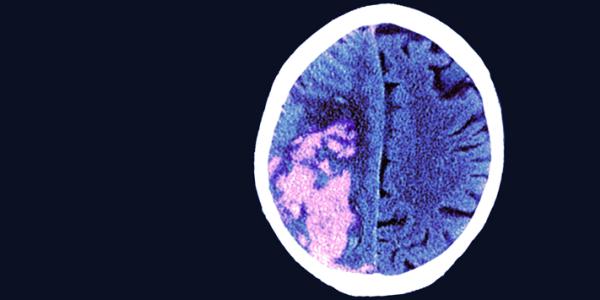
Dr. Peter C. Fung was born in Canton, China. He grew up in Hong Kong, attended and graduated from University of Hong Kong Medical School. After internship he came to US for further training. He received his Internal Medicine training in Michigan, followed by Neurology in the University Michigan, Ann Arbor. There he also received his postgraduate training in MS Neurology.
He started his Neurology practice in San Jose, and in 2002 relocated to Mountain View when he was appointed as medical director of the stroke program. With innovative methods and teamwork, he elevated the stroke program to one of the best in the nation, providing the best of stroke care to the community, and receiving multiple awards and accolades. In 2019, the stroke program was named Peter C. Fung M.D. Stroke Center.
He started his Neurology practice in San Jose, and in 2002 relocated to Mountain View when he was appointed as medical director of the stroke program. With innovative methods and teamwork, he elevated the stroke program to one of the best in the nation, providing the best of stroke care to the community, and receiving multiple awards and accolades. In 2019, the stroke program was named Peter C. Fung M.D. Stroke Center.
請點擊此轉換成中文
- What is a stroke?
A stroke, commonly called a “brain attack,” implies a damage of a portion of the brain or spinal cord, caused either by occlusion of blood vessel supplying this portion, or by bleeding either in or surrounding this portion of the nervous system. - How common and serious are strokes?
Stroke is the fifth leading cause of death in this country. This has reduced from the third leading cause from as recent as 10 years ago. In China it has remained the number one cause of death.
In US, there are still approximately 800,000 strokes each year. On average, someone has a stroke every 45 seconds, and someone dies as a result every 3.1 minutes. More importantly it is the number one cause of major and long term disability. Statistics indicate one in six women will eventually die of stroke, comparing to one in 25 dying of breast cancer. - What are different types of strokes?
Generally, it is either ischemic or hemorrhagic. The former can be secondary to thrombosis or occlusion of the blood vessel by atherosclerosis, or by a thrombus carried from the heart or a larger artery upstream. Hemorrhagic stroke occurs from rupture of an artery, usually diseased secondary to chronic or uncontrollable hypertension, or from a congenital maldevelopment of the blood vessel called an aneurysm. There are other less common causes such as inflammation of the arteries, malformation of the artery and vein, or hypercoagulation of the blood. - What health problems are associated with stroke? What are the risk factors for stroke?
There are many conditions that predispose a person to stroke. Some of them are quite easily correctable. I will list them in an alphabetical order:
A: Age. Incidence of stroke increases as we age. Unfortunately, we all get old, and as we do, we need to be more careful to reduce the other risks that are correctable.
Atrial Fibrillation: A very important factor that requires early detection, frequent monitoring, and frequently special forms of treatment will be necessary.
B: Blood Pressure. Or hypertension which is usually easily treatable, and if treated, one can reduce the risk of stroke by 40 to 45%. This risk factor is particularly important in the Asian and Chinese population. Salt intake is an important factor in sustaining hypertension.
C: Cholesterol. Another significant stroke risk, the reduction of which can reduce stroke by 20 to 30%.
D: Diabetes Mellitus. Yet a significant stroke risk factor as well as it is common in the Chinese population, affecting not only the brain circulation but the circulation to the extremities, kidneys, and the heart.
Diet: A healthy nutritious low cholesterol and low salt diet is essential not only for avoiding stroke but also in maintaining our overall health.
E: Exercises. Stroke reduction is one of the many benefits of adequate and regular exercises for us.
F: Fat. An ideal body mass index (BMI) is important. Please know the normal value for Asians – not more than 21% versus 25% for our Caucasian counterpart.
G: Gender. Women tend to live longer than men. There are more strokes in women.
Genetic: There are many genetic factors that increase the risk factors, such as Atrial Fibrillation, obesity, hypertension, cholesterol and diabetes that increase stroke. There are also less common genetic factors that can cause high incidences of stroke.
H: Humor. Having a happy outlook of life certainly is important as Depression increases the incidence of stroke. - How should hypertension be managed to prevent from stroke? Can seniors get a stroke due to a very low blood pressure?
40 to 45% of strokes can be avoided if hypertension can be treated and controlled. The monitoring is easy and convenient and should be done by everyone on a regular basis. Please remember the normal values of young verses older individuals – 120/80 versus 130/90.
It is unlikely that low blood pressure can cause a stroke unless the numbers are very low. Usually, symptoms such as dizziness and other symptoms would occur already especially on standing as the blood pressure is low which would alert the need to evaluation by your doctor. That is also why frequent measuring by yourself is so important. - What are the warning signs of a stroke? What should I do if I or someone I am with is exhibiting those symptoms?
Stroke can occur without any warning signs.
We use FAST to detect onset: F – Face; A – Arm; S – Speech for easy and early detection; and if any of these were to occur, time (T) will be of the essence that rapid evaluation and treatment in a hospital is necessary. - Is stroke treatable or curable?
Please remember, stroke is treatable, but you need to be in the emergency room of a stroke treating hospital early. Contact 911 and have yourself or your love-one to be transported to the nearest certified stroke centers.
It is important to remember that more than 80% of strokes are preventable if you can treat and control the risk factors. - What are prevalence rates of stroke in the general population versus the Chinese population? What explains the difference?
As I indicated above, stroke mortality has reduced in the country, now presently the # 5 of death.
Unfortunately, it is still the # 1 cause of death in China, primarily due the prevalence of hypertension and hemorrhage. - What can I do to prevent stroke?
By living healthily and reducing stroke risks. - Is Aspirin effective in preventing stroke?
As the most common and cheapest anti-platelet medication, it has a strong role in place for secondary stroke prevention, i.e., in patients who have had a stroke. The benefit for primary stroke prevention is not as robust, but likely still very helpful for the higher age group, in female and in people with multiple stroke risk factors. - Are all strokes acute? What cause chronic stroke?Are there subtypes of stroke?
"Brain attacks" are acute events. There can be multiple recurrent strokes. We usually like to designate "post stroke" rather than chronic stroke in patients after having had a stroke. - Can you provide advice on how to prevent secondary stroke, especially for older adults with different chronic disease or heart disease?
Stroke risks reduction is of prime importance.
The regimen for secondary stroke prevention usually involves hypertension, diabetic and lipid control. Frequently various anti-platelet regimen or anticoagulants are also used in addition, the latter especially in patients with cardiac disease such as Atrial Fibrillation.

